Electric Vehicles (EVs)
2021 Toyota Yaris Cross GXL 2WD Hybrid: Private Fleet Car Review.
Toyota started the SUV phenomenon with the original RAV4. Surprisingly, it’s a bit late to a party it helped plan, with the city SUV Yaris Cross coming after other brands have released similar vehicles. There’s a three model range with GX, GXL, and Urban, and a 2WD, 2WD Hybrid, and AWD Hybrid, the same as found in the newest RAV4. Each have a 3 cylinder, 1.5L petrol engine, the same as now found in the Yaris hatches. Pricing for the GX starts from $30,447 in Ink Black, 2WD and non-hybrid, with metallics, including the Mineral Blue found on the review vehicle, to $30,962. The pricing matrix can be slightly confusing so follow this link to find a price for your location and specification. Our Mineral Blue GXL Hybrid 2WD starts from $36,168 drive-away for our location.
Pricing for the GX starts from $30,447 in Ink Black, 2WD and non-hybrid, with metallics, including the Mineral Blue found on the review vehicle, to $30,962. The pricing matrix can be slightly confusing so follow this link to find a price for your location and specification. Our Mineral Blue GXL Hybrid 2WD starts from $36,168 drive-away for our location.
The important parts of the Yaris Cross are the engine package and the size of the body. On the first point, we’ll admit to being somewhat baffled by the numbers. In non-hybrid trim, the 1.5L triple cylinder is rated, says Toyota, at 88kW and 145Nm. The hybrid package is 85kW and 120Nm……Economy isn’t hugely different at 5.4L/100km to 3.8L/100km on the combined cycle, with 91RON and a tank of 42L or 36L in the Hybrid. Transmission is a CVT with ten preprogrammed ratios and includes a mechanical first gear for better off the line acceleration. The AWD version has a separate rear axle electric motor and can take up to 60% of the torque when the drive sensors says so. Sizewise, the Yaris Cross sits on a 2,560mm wheelbase, with a total length of 4,180mm. There’s a height of 1,590mm, and width of 1,765mm. In comparison the Hyundai Kona in 2020 spec is 4,205mm and 1,550mm long and high on a 2,600mm wheelbase. Wheels for the GX and GXL are 16 inch diameter alloys, with rubber at 205/65 and from Bridgestone’s Turanza range.
Sizewise, the Yaris Cross sits on a 2,560mm wheelbase, with a total length of 4,180mm. There’s a height of 1,590mm, and width of 1,765mm. In comparison the Hyundai Kona in 2020 spec is 4,205mm and 1,550mm long and high on a 2,600mm wheelbase. Wheels for the GX and GXL are 16 inch diameter alloys, with rubber at 205/65 and from Bridgestone’s Turanza range.
That SUV body gives it an extra 30mm ground clearance than its hatchback sibling and stands taller by 90mm, spreads wider by 20mm and is longer by 240mm..
In profile, the Yaris Cross bears an unsurprisingly striking resemblance to bigger sibling RAV4, complete with bulldog blunt nose, a kicked up rear, and steeply angled tailgate line. The cargo door opens to a 390L space (314L in Urban) which houses a spacesaver spare. The Urban gets the goo kit.
The front is perhaps the blandest part of the Yaris Cross, and one of the blandest seen on a car in recent times. It looks nothing like the standard Yaris hatch nor the GR versions; they, at least, still have a family resemblance. Here we see a pair of intakes split by a body coloured strip, a pair of vertical LED strips, and darkened headlight covers. Body moldings for the wheel arches are joined by a thick slab on the sills which has the car’s name embossed in. Inside it’s not quite as bland. The dash is the same as the hatch, with a pair of smaller dials set ahead of an information screen. The left dial shows the energy status of the drive on the go, from charge to Eco, to Power. Speed and fuel tank info are on the right. The centre screen shows battery and drive flow information, audio, economy (3.9L/100km) was our final average). satnav and DAB are included in the main 7.0 inch touchscreen.
Inside it’s not quite as bland. The dash is the same as the hatch, with a pair of smaller dials set ahead of an information screen. The left dial shows the energy status of the drive on the go, from charge to Eco, to Power. Speed and fuel tank info are on the right. The centre screen shows battery and drive flow information, audio, economy (3.9L/100km) was our final average). satnav and DAB are included in the main 7.0 inch touchscreen. In the console are the switches for the drive modes (Normal, Eco, Sport), traction control, and EV mode. As is the norm for Toyota, the petrol engine kicks in on anything other than a light throttle. The drive selector has a B for Brake, which harvests energy from the braking. There is only one USB port and no offering of a wireless charge pad. Plastics are of an average look and the steering wheel insert was slightly loose and squeaky.
In the console are the switches for the drive modes (Normal, Eco, Sport), traction control, and EV mode. As is the norm for Toyota, the petrol engine kicks in on anything other than a light throttle. The drive selector has a B for Brake, which harvests energy from the braking. There is only one USB port and no offering of a wireless charge pad. Plastics are of an average look and the steering wheel insert was slightly loose and squeaky.
Rear seat leg room is tight, quite tight. Adults would struggle to be comfortable and lanky teenagers don’t quite fit. A centre portion of the 60% part of the 60/40 seats has a pair of cupholders and that’s as much in the way of extra convenience items the rear seat passengers in the GXL will have. Having said that, the actual comfort level of sitting in the cloth covered seats is good, with plenty of support and the fronts eats have good lumbar support too. As a driving package the Yaris Cross demonstrates that even Toyota can get it wrong. The driveline exhibits the same bang and shunt as experienced in the Yaris ZR Hybrid as the throttle is applied or lifted. At times, in opposition, it’s smooth and seamless as the petrol engine kicks in and out, and noticable more on light throttle applications.. The 1.5L is raucous at times, and the insulation under the bonnet is thin, allowing plenty of noise through. Toyota have also located the bonnet strut directly above the engine. The doors aren’t well insulated either, which means external noises filter through easily, and the lack is noticeable when closing the doors. There’s a tinny “thunk”, not a satisfyingly weighted thump.
As a driving package the Yaris Cross demonstrates that even Toyota can get it wrong. The driveline exhibits the same bang and shunt as experienced in the Yaris ZR Hybrid as the throttle is applied or lifted. At times, in opposition, it’s smooth and seamless as the petrol engine kicks in and out, and noticable more on light throttle applications.. The 1.5L is raucous at times, and the insulation under the bonnet is thin, allowing plenty of noise through. Toyota have also located the bonnet strut directly above the engine. The doors aren’t well insulated either, which means external noises filter through easily, and the lack is noticeable when closing the doors. There’s a tinny “thunk”, not a satisfyingly weighted thump.
Steering is light, and the chassis is easily upset over bumps, but minimally changes the direction of the nose. It’s twitchy at times, and light cross winds had the Yaris Cross move around. It’s less composed than expected, all around, with an unsettled ride more often than not the sensation, rather than a well mannered experience. In small spaces, such as roads for a three point turn, underground carparks in shopping centres, and general daily driving, the fidgety handling becomes a benefit, as the short body and the light steering make moving the Yaris Cross around in these environments easy. On both sides of the drive, the Bridgestone rubber squealed… The same applies to the drive; it’s by no means a rocketship, even allowing for the CVT and the battery. Sink the slipper and the 1.5L yells its three cylinder noise, the CVT sees the rev count climb, and forward pace is …leisurely. It’s been timed elsewhere as something around the 11 to 12 second mark to reach 100kph. Again, the Yaris Cross points towards being better suited for the urban environment rather than the outer ‘burbs.
The same applies to the drive; it’s by no means a rocketship, even allowing for the CVT and the battery. Sink the slipper and the 1.5L yells its three cylinder noise, the CVT sees the rev count climb, and forward pace is …leisurely. It’s been timed elsewhere as something around the 11 to 12 second mark to reach 100kph. Again, the Yaris Cross points towards being better suited for the urban environment rather than the outer ‘burbs.
There is a good safety package as standard across the range. A pedestrian and cyclist calibrated anti-collision system is standard, as is Lane Trace Assist, Intersection Turn Assistance, and Traffic Sign recognition for speed signs. The GX misses out on Blind Spot Monitor and Rear Cross Traffic Alert. There are eight airbags, including two between the front passengers and, in a first for Toyota in Australia, an SOS function which can call an emergency centre at the press of a button or automatically in the event of airbag deployment. Warranty is a five year/unlimited kilometre mix, with servicing capped at $205 for a cycle of 15,000 kilometres. Battery warranty is ten years.
Warranty is a five year/unlimited kilometre mix, with servicing capped at $205 for a cycle of 15,000 kilometres. Battery warranty is ten years.
At The End Of The Drive.
City SUVs appear to be “the next big thing” in a crowded marketplace and although Toyota hasn’t lead the charge in this segment, it lobs a solid, if uninspiring, entry. It’s clearly marketed (and engineered, we think too) at a couple with no or one small child, making it an ideal second car too. The ride quality deters from really exploring its envelope as it’s dynamically off-par. But punt it at city velocities and it’s at home.
But, and yes, there has to be another but, it’s the price. Consider the Mazda CX-3 which ranges from $22,710 to $38,450, Ford’s new Puma ($29,990 to $35,540), Subaru’s XV, ($29,240 – $35,580), and the VW T-Cross ($27,990 – $30,990). Hybrid tech does factor but for some the drive quality will turn them away.
EV Supercars

Porsche Taycan Turbo S
Porsche has already built their fully electric supercar and it’s called the Taycan. Currently, the quickest Taycan is the Taycan Turbo S, which boasts 560 kW of power, 1,050 N⋅m of torque, a 0-100 km/h sprint time of just 2.8 seconds and a top speed of 260 km/h. We knew it would be fast, but it will also manage around 400 km of travel before a recharge is needed. Of course, that range will be affected by factors like the weather, number of hills in your commute, how heavy your right foot is, how many on-board features you’re running and how much extra weight is on board – all much the same traits that affect combustion consumption…
Tesla is the biggest name in electric vehicles, and their new Roadster sets the supercar performance benchmark. Revealed back in 2017, the second-generation Tesla Roadster will be capable of skipping through the 0-100 km/h in around 2 seconds, the 0-160 km/h dash in 4.2 seconds, the quarter mile in 8.8 seconds and boast a top speed of around 400 km/h. These records are aided by a phenomenal 10,000 Nm combined torque output for the AWD system and a drivable range before recharging of even over 900 km. The new Tesla Roadster sales will likely begin 2022.
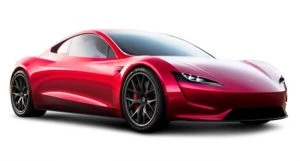
Tesla Roadster
Porsche and Tesla are, perhaps, the more well-known leaders in EV supercar technology.
Ferrari has yet to build a fully electric car. Ferrari is concentrating on their hybrid supercars; the new Ferrari SF90 Stradale being the latest model that incorporates electric motors with the combustion engine layout. Ferrari claims the SF90 Stradale can clean out the 0-100 km/h sprint in well under 3 seconds, the 0-200 km/h dash in less than 7 seconds, while reaching a top speed in excess of 330 km/h. The SF90 Stradale can also travel 12-to-24 km on battery power alone. John Elkann, from Ferrari, says the company will offer its first electric supercar at some stage this decade, but the hybrid models would still form part of its line-up even in 2030. However, that said, Ferrari is looking to sell the Ferrari Purosangue as their first SUV with hybrid engines, along with a fully-electric powertrain for the two following Purosangue models. From the word go, the Purosangue will be designed with the chassis structured to take full electric power. The first hybrid Purosangue should be on sale between 2024 and 2026.
You can’t talk about Ferrari’s electric future without considering Lamborghini’s. Lamborghini has yet to develop an all-electric supercar. Come 2021/2022, Lamborghini is offering a production hybrid supercar called the Lamborghini Sian FKP 37. That sounds like a similar direction to Ferrari; however, Lamborghini did unveil the Terzo Millennio concept car back in 2017.
So, who else is offering fully electric supercars? The following EV supercars have been built up by various entrepreneurs and joint ventures and are, therefore, very rare. Here are some of them to whet your appetite:
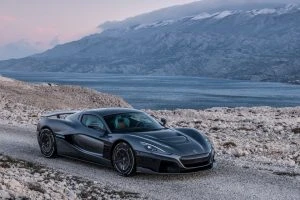
Rimac C_Two
The Rimac C_Two has a 412 km/h top speed backed up with approximately 500 km of electric range.
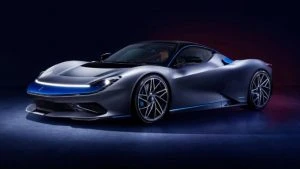
Pininfarina Battista

Lotus Evija
The Lotus Evija has a claimed 1,680 kg weight – pretty light for an EV supercar.
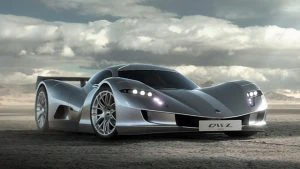
Aspark Owl
Aspark Owl with its 0-100 km/h sprint done and dusted in less than 2 seconds. Top speed over 400 km/h.
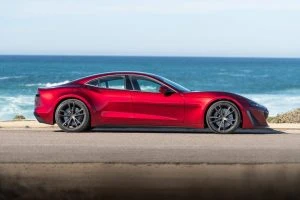
Drako-GTE
The Drako GTE is the brainchild of two Californian-based engineers and entrepreneurs. The car should deliver around 8,880 Nm of torque and a 400 km/h-plus top speed.
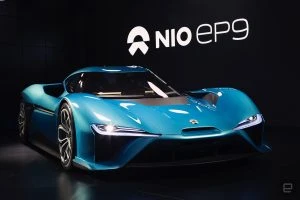
Nio-ep9
The Nio EP9 has actually delivered a 6 m 45.9 sec Nürburgring lap in the hands of Scottish driver Peter Dumbreck. The EV supercar boasts around 6334 Nm of torque and a down-force claimed to be twice that of an F1 car.
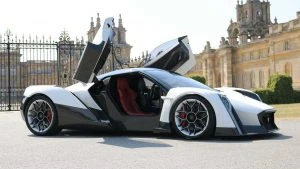
Dendrobium D-1
The Dendrobium has money and inspiration provided to it from Singapore; however it is being engineered and developed in the UK by Williams Advanced Engineering, and with people who were involved in the McLaren F1 design.
FCAI Sees Tunnel’s Light As Sales Increase
The Federal Chamber of Automotive Industries, the FCAI, has released the new vehicle sales figures for February 2021. 83,977 vehicles were sold in February 2021, which is up 5.1 per cent on February 2020. Sales for that month saw 79,940 vehicles sold.
This positive result was reflected in the increases seen for N.S.W., W.A., S.A., QLD, and the N.T. Victoria was down by 8.7%, Tasmania by 3.9%, and the ACT by 38.3% compared to February 2020. Year to date sales of 163,643 vehicles is up 7.9 per cent on the same period in 2020.
SUV sales continued to dominate the market with sales of 42,651 vehicles and representing 50.8 per cent of the total market for February 2021. Light commercial vehicle sales represented 23 per cent (19,326) and passenger vehicles 22.9% (19,194).
On a marque basis, Toyota had a 21.9% market share, Mazda 9.9%, Hyundai 7.4%, equal with Mitsubishi and just ahead of Kia, and Ford on 7.0%, and 5.6%. Nissan clocked 4.6% with fellow Japanese maker Subaru on 3.1%. VW had 3.6 whilst Chinese owned and built MG also saw 3.6%. February sales saw a continued shift in preference by buyers to move away from passenger vehicles. Sales fell 15.3% in February 2021 compared to sales in February 2020. Sales of SUVs were up 8.6 per cent and sales of light commercials were up 24.3 per cent. Hybrid SUVs continue their inexorable climb, with 2,713 sold in February 2021, against 2,546 for the same period last year, and 5,456 from January 1st compared to 4,018 last year. PHEV sales were also up, with 149 and 275 against 92 and 149 on a month and year to date basis.
February sales saw a continued shift in preference by buyers to move away from passenger vehicles. Sales fell 15.3% in February 2021 compared to sales in February 2020. Sales of SUVs were up 8.6 per cent and sales of light commercials were up 24.3 per cent. Hybrid SUVs continue their inexorable climb, with 2,713 sold in February 2021, against 2,546 for the same period last year, and 5,456 from January 1st compared to 4,018 last year. PHEV sales were also up, with 149 and 275 against 92 and 149 on a month and year to date basis.
Toyota’s RAV4 lead the way in the category, with 2,750 against the Mazda CX-5’s 2,048. It was a scrap for third place with Mitsubishi’s Outlander (1,178), Nissan’s X-Trail (1,151), Hyundai’s Tucson (1,062) and Subaru’s Forester (1,009) duking it out. In the large SUV category and at sub-$70K, Toyota’s Prado won comprehensively with 1,407. Isuzu’s MU-X saw 745 sales for 2nd place, edging the outgoing Subaru Outback on 608. FCAI chief executive, Tony Weber, said the result showed that confidence was continuing to grow in the market. “During the past four months we have seen an increase of 10.6% in new vehicles and this has been reflected with strong growth in NSW, Queensland, Western Australia, South Australia and the Northern Territory in February 2021. The sales reduction in Victoria can be attributed to the COVID 19 restrictions that were put in place during the month.“We remain confident that this trend of growth will continue in an environment where business operating conditions continue to normalise.”
FCAI chief executive, Tony Weber, said the result showed that confidence was continuing to grow in the market. “During the past four months we have seen an increase of 10.6% in new vehicles and this has been reflected with strong growth in NSW, Queensland, Western Australia, South Australia and the Northern Territory in February 2021. The sales reduction in Victoria can be attributed to the COVID 19 restrictions that were put in place during the month.“We remain confident that this trend of growth will continue in an environment where business operating conditions continue to normalise.”
Toyota was the leading brand in February with sales of 18,375 vehicles (21.9 per cent of the market), followed by Mazda with 8,322 (9.9 per cent), Hyundai with 6,252 (7.4 per cent), Mitsubishi with 6,202 (7.4 per cent) and Kia with 5,871 (7 per cent).
The Toyota Hilux was the best-selling vehicle in February 2021 with sales of 4,808 vehicles, followed by the Ford Ranger (2,900), the Toyota RAV4 (2,750), the Toyota Landcruiser (2,521) and the Toyota Corolla (2,427).
Kia’s revamped Carnival continued to dominate the People Mover sub-$60K segment, with 606 sales for a massive 62.5% market share, with Honda’s Odyssey on just 127. Mercedes-Benz listed 28 in the plus-$60K market for the V-Class. Purely electric passenger vehicles have seen a mild increase, with 119 for February 2021 against 86 for the same time in 2020. It’s the same on a YTD basis with 197 to 165 for 2020. For the electric SUV segment, it was a better result, with 139 to 60 for a month comparison, and 352 to 97 on a YTD basis.
Purely electric passenger vehicles have seen a mild increase, with 119 for February 2021 against 86 for the same time in 2020. It’s the same on a YTD basis with 197 to 165 for 2020. For the electric SUV segment, it was a better result, with 139 to 60 for a month comparison, and 352 to 97 on a YTD basis. Key Points:
Key Points:
• The February 2021 market of 83,977 new vehicle sales is an increase of 4,037 vehicle sales or 5.1% on February 2020 (79,940) vehicle sales. February 2020 and February 2021 each had 24 selling days and this resulted in an increase of 168.2 vehicle sales per day.
• The Passenger Vehicle Market is down by 3,466 vehicle sales (-15.3%) over the same month last year; the Sports Utility Market is up by 3,378 vehicle sales
(8.6%); the Light Commercial Market is up by 3,784 vehicle sales (24.3%); and the Heavy Commercial Vehicle Market is up by 341 vehicle sales (13.8%) versus
February 2020.
• Toyota was market leader in February, followed by Mazda and Hyundai. Toyota led Mazda with a margin of 10,053 vehicle sales and 12.0 market share points.
(Information courtesy of FCAI)
2021 Volvo XC90 T8 Recharge PHEV: Private Fleet Car Review
Hybrid technology is becoming a way of life in the automotive world and ranges from the everyday car to the ultra luxury. Somewhere in between is Volvo and their hybrid SUV “Recharge” offerings. The big ‘un, the XC90, is now partially electrified and available as a Plug-in Hybrid Electric Vehicle or PHEV. Complete with a solid list of standard equipment and extras, their is a Manufacturer’s recommended list price and as driven price of $114,990 and $120,715.
Complete with a solid list of standard equipment and extras, their is a Manufacturer’s recommended list price and as driven price of $114,990 and $120,715.
The key to what turned out to be a surprisingly rapid and agile big SUV is a 2.0L petrol fed engine that is both supercharged and turbocharged. The EV part comes from a battery that assists and electric motor that produces, says Volvo, 65kW and 240Nm to work with the petrol powerplant’s 246kW and 440Nm. That torque figure comes in at 2,200rpm and runs to 4,400rpm.
This endows the hefty, at 2,315kg, XC90, with ferocious speed, albeit limited to 180kph as a top speed. It will easily see the freeway limit in 5.5 seconds, and overtake others at a rate that would have Superman blink in astonishment. Along the way, Volvo says economy is rated at 2.1L/100km from a 70L tank. Herein lies the rub. The battery, when fully charged, offers just 35km of range on battery power alone. In conjunction with the drive modes, such as (mild) off-road, and the Polestar engineering mode, this is possible but in the real world mostly not. To extract the best out of the combination, it’s highway cruising that needs to be employed as the battery runs down to a point that it no longer really assists but will supplement in a reduced capacity. To that end we saw a final overall figure of 6.4L/100km, in itself a better than respectable figure for the mass of the XC90 Recharge.
Herein lies the rub. The battery, when fully charged, offers just 35km of range on battery power alone. In conjunction with the drive modes, such as (mild) off-road, and the Polestar engineering mode, this is possible but in the real world mostly not. To extract the best out of the combination, it’s highway cruising that needs to be employed as the battery runs down to a point that it no longer really assists but will supplement in a reduced capacity. To that end we saw a final overall figure of 6.4L/100km, in itself a better than respectable figure for the mass of the XC90 Recharge. The Four-C Active Chassis suspension is height adjustable thanks to electronically controlled airbags being employed and does so with the drive modes programming. It’ll also lower in height when the XC90 Recharge is switched off via the centre console located rotary dial. Here one would think that the ride quality is not that good. It’s the opposite, and although not quite completely dialing out the artificial feel airbag suspension setups have, it’s never anything less than comfortable.
The Four-C Active Chassis suspension is height adjustable thanks to electronically controlled airbags being employed and does so with the drive modes programming. It’ll also lower in height when the XC90 Recharge is switched off via the centre console located rotary dial. Here one would think that the ride quality is not that good. It’s the opposite, and although not quite completely dialing out the artificial feel airbag suspension setups have, it’s never anything less than comfortable.
Up front is a double wishbone transverse link setup, with the rear a integral axle transverse leaf spring composition. Together they bring a wholly adept ride and handling package to the XC90 Recharge, along with the grip levels thanks to the 22 inch double spoke black painted and diamond cut alloys. Pirelli supply the rubber and they’re 275/35s from the famous P-Zero range. Although a thin sidewall, the suspension is clearly tuned with that in mind, such is the poise and lack of bump-thump displayed. And those wide tyres add so much tenacity in being able to corner harder and longer when enjoying that flexibility from underneath the bonnet.
Although a thin sidewall, the suspension is clearly tuned with that in mind, such is the poise and lack of bump-thump displayed. And those wide tyres add so much tenacity in being able to corner harder and longer when enjoying that flexibility from underneath the bonnet.
Steering is precise, and mayhaps too precise for some used to oodles of understeer or numbness. It’s perfectly weighted and for the size of the wheels and rubber, there’s a pleasing lack of “ponderous”. It’s more a delight than it has the right to be, and nimble enough in the feel to make it a small to mid-sized hatch rather than the large SUV it really is.
Rolling acceleration delivers in that “pin you back in the seat” manner, especially when the battery is charged. Although untimed, that quoted 5.5 seconds, too, is on the mark from a seat of the pants point of view. Recharge of the battery from the brakes is on a graduated level. Drive, once the ignition dial is switched, is engaged by a simple tap forward or backwards lever just ahead of the switch, and a tap back from Drive changes the amount of braking regenerative force that feeds the battery. Although needing a very long hill to make any appreciable impact, there is enough noticeable retardation and a small increase in range seen in the dash display.
Recharge of the battery from the brakes is on a graduated level. Drive, once the ignition dial is switched, is engaged by a simple tap forward or backwards lever just ahead of the switch, and a tap back from Drive changes the amount of braking regenerative force that feeds the battery. Although needing a very long hill to make any appreciable impact, there is enough noticeable retardation and a small increase in range seen in the dash display.
Volvo have kept the fact that it’s a PHEV quiet. Apart from the numberplate fitted, there is the charge port on the front left fender and a badge on the powered tailgate with “Recharge”. Aside from the hole for that charge port, which opens at the press of a hand to reveal a weatherproofed, covered, port, it’s an invisible PHEV presence. The exterior is otherwise unchanged, from the Thor’s hammer driving lights and indicators to the LED rear lights, it’s a curvaceously boxy body. Inside there’s luxury in the form of the Bowers and Wilkins audio, leather seats, the integrated tablet-style infotainment screen, and LCD dash display. Run a drive destination into the navigation and the centre of the LCD driver’s screen shows the map. There is also a subtle, and almost lost, HUD display.
The exterior is otherwise unchanged, from the Thor’s hammer driving lights and indicators to the LED rear lights, it’s a curvaceously boxy body. Inside there’s luxury in the form of the Bowers and Wilkins audio, leather seats, the integrated tablet-style infotainment screen, and LCD dash display. Run a drive destination into the navigation and the centre of the LCD driver’s screen shows the map. There is also a subtle, and almost lost, HUD display.
 Rear seats have their own climate control and the capacious cargo area (651L to 1,950L) has plenty of high quality carpeting and switches for the powered tailgate. There is a bag for the charge cable and a hook to hang it from. There is also a cargo blind which was in the way when it comes to moving the third row seats and no obviously apparent storage locker for it too.
Rear seats have their own climate control and the capacious cargo area (651L to 1,950L) has plenty of high quality carpeting and switches for the powered tailgate. There is a bag for the charge cable and a hook to hang it from. There is also a cargo blind which was in the way when it comes to moving the third row seats and no obviously apparent storage locker for it too. Controls for the car are embedded in the touchscreen, with climate control including venting/heating for the front seats, safety features, and smartapps such as Spotify and TuneIn included. The tablet style screen works on swiping left and right for the main info, and a pulldown from the top for settings and an electronic instruction manual.
Controls for the car are embedded in the touchscreen, with climate control including venting/heating for the front seats, safety features, and smartapps such as Spotify and TuneIn included. The tablet style screen works on swiping left and right for the main info, and a pulldown from the top for settings and an electronic instruction manual.
Our review car came with options fitted; Climate pack which has heating for the windscreen washers, rear seat, and tiller at $600. The centre row seats has powered folding headrests at $275, whilst metallic paint is a hefty $1,950. The Nappa leather covered seats in charcoal to match the trim is $2,950. It’s a Volvo so those letters can be pronounced “safety”. Volvo has their CitySafe package, with Pedestrian, Vehicle, Large Animal, Cyclist Detection, and Intersection Collision Mitigation. Intellisafe Assist has Adaptive Cruise Control with Pilot Assist, Collision Warning with Auto Brake (which picks up parked cars on corners…), and Intellisafe Surround that includes Blind Spot Information System, Cross Traffic Alert and Rear Collision warning (which stops the car from moving if sensors pick up an obstacle), and airbags throughout the cabin.
It’s a Volvo so those letters can be pronounced “safety”. Volvo has their CitySafe package, with Pedestrian, Vehicle, Large Animal, Cyclist Detection, and Intersection Collision Mitigation. Intellisafe Assist has Adaptive Cruise Control with Pilot Assist, Collision Warning with Auto Brake (which picks up parked cars on corners…), and Intellisafe Surround that includes Blind Spot Information System, Cross Traffic Alert and Rear Collision warning (which stops the car from moving if sensors pick up an obstacle), and airbags throughout the cabin. At The End Of The Drive. There is something to be said for the brands, in the automotive sense, that are leading the charge (no pun intended) towards hybrid and fully EV availabililty. Brands such as Jaguar have announced they’ll be fully EV by 2025, for example. Volvo, under the chequebook auspices of Geely, continue to produce the classy and safety-oriented vehicles they’re renowned for, and push towards a more expansive hybrid range.
At The End Of The Drive. There is something to be said for the brands, in the automotive sense, that are leading the charge (no pun intended) towards hybrid and fully EV availabililty. Brands such as Jaguar have announced they’ll be fully EV by 2025, for example. Volvo, under the chequebook auspices of Geely, continue to produce the classy and safety-oriented vehicles they’re renowned for, and push towards a more expansive hybrid range. As potent as the petrol engine is on its own, the short distance available from battery power alone and as a backup for hybrid driving detracts somewhat from the intent, especially for our wide brown land. In Europe where you can drive through seventeen towns in the time it takes to sneeze four times, it’s a different story.
As potent as the petrol engine is on its own, the short distance available from battery power alone and as a backup for hybrid driving detracts somewhat from the intent, especially for our wide brown land. In Europe where you can drive through seventeen towns in the time it takes to sneeze four times, it’s a different story.
For the driver, it’s a sports car in a big car body, and just happens to be able to carry up to seven people in comfort and knowledge of safety thanks to the famous Volvo safety heritage. In the competition area there are the three German brands against it, and in a purely EV sense, Tesla’s Model X, complete with its lights and door dance routine for entertainment value. In a tough market segment, sometimes the difference can be small to see in value but Volvo assures that the extra range capability is coming. That will help the XC90 increase its appeal.
Thanks to Volvo Australia for the provision of the 2021 XC90 T8 Recharge.